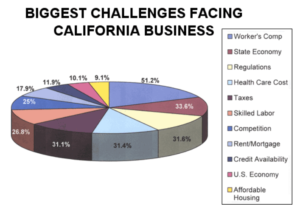How Leaders Can Take Charge of Change

By Jennifer J. Salopek
It’s easy to just say people “resist change.” The reality is that you can create an environment where a change initiative won’t encounter harsh skepticism.
TechnologyOur firm may be introducing Web-based training, a knowledge-management system. Whatever the flavor of the month, new technology can create real resistance in your workforce — and, in some cases, anxiety and fear.
David Dell, research director for capabilities management and HR at The Conference Board, has observed, “Both HR and IT have many new issues to address and many decisions to make and implement. But the speed of change in both areas makes the challenge more difficult as it increases the promise.”
***
Why do people resist change? Leslie Smith, a clinical psychologist and former Web designer in McLean, Virginia, outlines these reasons:
Fear of making mistakes or looking foolish.
A lack of understanding or confidence in the new system and its benefits.
Anxiety about doing more. Employees often feel overworked already, and resist learning something new when it’s layered on top of their existing duties.
Change fatigue. Once people learn something new, they’d like to stick with that new knowledge and take a rest.
Jeanie Daniel Duck, author of The Change Monster: The Human Forces That Fuel or Foil Corporate Transformation & Change, writes, “The knee-jerk answer (to failed change efforts) is the people ‘resist change,’ as if ‘resistance to change’ were some kind of sorry genetic code that, if it could be re-engineered, would magically produce people instantly eager to do things differently whenever anyone asked. The ‘resistance to change’ answer… is appealing because it takes the blame off the leaders and puts it on those ‘no-good followers.'”
Leaders must take charge of change. There are many things that you can do to ensure a more successful initiative, including:
Communicate
Explain what benefits you expect from the new system and how people’s roles might change. Also, make sure that change is championed from the top of the organization and communicate that support.
Collaborate
Involve prospective users in change decisions and choices. Duck says it’s not the change that’s the problem, but the way it comes down. “People are changing all the time, but those are changes of their own choosing,” Duck says. “People resist being told they have to change.”
Demonstrate
As Duck observes, people are powerfully motivated by self-interest. Technological change is likely to be more successful if people are shown what’s in it for them. “When they’re motivated, it’s amazing what people can do,” she says.
Evaluate
Look at the whole corporate culture, not just IT, to determine how many other changes people are being asked to deal with at the same time, such as a merger or reorganization. Perhaps it’s time to give them a breather.
Commiserate
Let people know it’s okay to complain, Duck advises. It provides a useful outlet. Although IT may feel like the corporate whipping boy, “that’s the nature of the beast. IT departments have a checkered past,” she says. “They must accept that and be more careful.” Further, allowing complaint and disagreement might enable you to measure resistance before you spend millions of dollars on that new initiative.
Don’t denigrate
Mary Lynn Pulley, Ph.D., is a faculty member at the Center for Creative Leadership in Greensboro, North Carolina. She maintains that the learning curve is upside down: “It’s more of a valley than a hill,” she says. “Whenever you learn anything, your performance actually declines before it improves.”
She refers to that performance dip as the Valley of Chaos and urges learners to remember that chaos and creation go hand in hand. “Things have to fall apart or disintegrate in some way so that they can come back together in a new way.” Managers must make it clear that mistakes are okay and avoid any kind of punishment for error in a learning environment.
Eradicate. “You must allow for the notion of un-learning as people abandon old ways,” Pulley says. Know that people have to rid their minds and routines of that which no longer works, but be aware that getting rid of the old and familiar can engender fear and confusion.
We hope you found this article about “How Leaders Can Take Charge of Change” helpful. If you have questions or need expert tax or family office advice that’s refreshingly objective (we never sell investments), please contact us or visit our Family office page or our website at www.GROCO.com. Unfortunately, we no longer give advice to other tax professionals gratis.
To receive our free newsletter, contact us here.
Subscribe our YouTube Channel for more updates.

Alan Olsen, is the Host of the American Dreams Show and the Managing Partner of GROCO.com. GROCO is a premier family office and tax advisory firm located in the San Francisco Bay area serving clients all over the world.
Alan L. Olsen, CPA, Wikipedia Bio

GROCO.com is a proud sponsor of The American Dreams Show.

The American Dreams show was the brainchild of Alan Olsen, CPA, MBA. It was originally created to fill a specific need; often inexperienced entrepreneurs lacked basic information about raising capital and how to successfully start a business.
Alan sincerely wanted to respond to the many requests from aspiring entrepreneurs asking for the information and introductions they needed. But he had to find a way to help in which his venture capital clients and friends would not mind.
The American Dreams show became the solution, first as a radio show and now with YouTube videos as well. Always respectful of interview guest’s time, he’s able to give access to individuals information and inspiration previously inaccessible to the first-time entrepreneurs who need it most.
They can listen to venture capitalists and successful business people explain first-hand, how they got to where they are, how to start a company, how to overcome challenges, how they see the future evolving, opportunities, work-life balance and so much more..
American Dreams discusses many topics from some of the world’s most successful individuals about their secrets to life’s success. Topics from guest have included:
Creating purpose in life / Building a foundation for their life / Solving problems / Finding fulfillment through philanthropy and service / Becoming self-reliant / Enhancing effective leadership / Balancing family and work…

MyPaths.com (Also sponsored by GROCO) provides free access to content and world-class entrepreneurs, influencers and thought leaders’ personal success stories. To help you find your path in life to true, sustainable success & happiness. It’s mission statement:
In an increasingly complex and difficult world, we hope to help you find your personal path in life and build a strong foundation by learning how others found success and happiness. True and sustainable success and happiness are different for each one of us but possible, often despite significant challenges.
Our mission at MyPaths.com is to provide resources and firsthand accounts of how others found their paths in life, so you can do the same.
How to Successfully Sell Your Company
How to Successfully Sell Your Company Tips for Privately-Held Business Owners By Jason Pfannenstiel Be clear about your motivation for selling. Reason for the sale is among the first questions buyers will ask. Your personal and professional reasons should be more than simply wanting to cash out for a certain magical dollar value. Before you…
15 Ways to Improve Your Cash Flow Now
15 Ways to Improve Your Cash Flow Now By Howard Fletcher Cash management theory and techniques are well understood and practiced by treasury managers in large corporations. They use sophisticated models and cash management tools that allow them to predict and manage cash. Many of these are beyond the reach or need of small companies.…
Survey: Biggest Challenges Facing California Businesses
Survey: Biggest Challenges Facing California Businesses A recent survey was conducted to determine what business owners in California thought the biggest challenges facing their businesses were. Out of 1500 questionnaires, these are the percentage of respondents who checked off a box next to each challenge. (Respondents were allowed to select more than one box, so…
5 Strategies to Successful Cash Flow Management
5 Strategies to Successful Cash Flow Management By John Reddish How can you predict, avoid and/or, minimize the impact of a cash emergency? Managing cash flow is every manager’s challenge, every day, every year. Those managers who keep a close eye on their daily activity and emerging industry trends can help reduce their company’s exposure…


